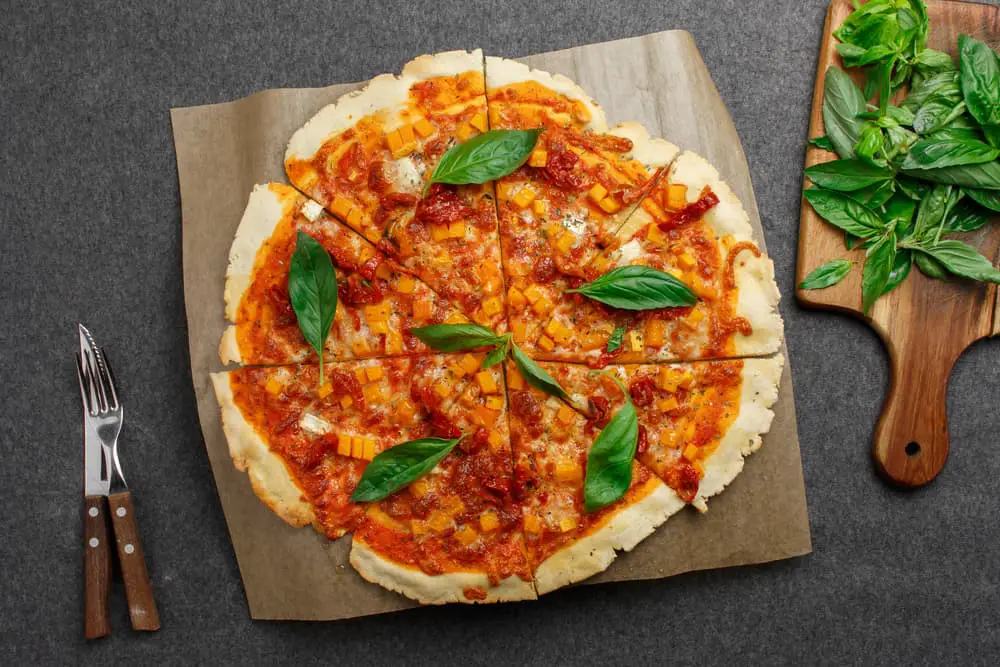Last Updated on 22nd April 2022 by
As my all-time favorite snack (and dinner, when I’m feeling lazy to cook), pizza and all its iterations have been my comfort food since time immemorial. Whether store-bought or homemade ones, I’ve probably tried all kinds of pizzas available in the market.
And then, one day, I found I was welcoming a guest with a condition related to gluten, and the gasp I let out because I was planning to prepare my signature homemade pizza for my guests. It was then that I started researching gluten and, lo and behold, gluten-free pizza.
But what is gluten, and what does gluten-free mean? By the end of this article, you will learn how to make gluten-free pizza dough and how it’s different from regular pizza doughs. And not just the dough! I’ll be sharing how to make gluten-free pizza, so you have a recipe handy when you need them.
What Does Gluten-Free Mean?
First things first, what does gluten-free mean?
Gluten is a protein found in many wheat and grain products. Although it is, eating gluten-free doesn’t necessarily equate to eating lesser carbohydrates, as rice, potatoes, and beans don’t necessarily have gluten.
Many people with gluten restrictions, like those with symptoms of celiac disease and other gluten-related conditions, have no choice but to go on a gluten-free diet.
This means they should avoid any food with gluten and could only primarily consume fruits, vegetables, meats, and eggs, together with specifically labeled gluten-free products. Some processed foods, like pasta, pizza, and bread where gluten is usually present, could also be gluten-free if made with the right ingredients.
However, eating gluten-free has become a sort of lifestyle for some. A gluten-free diet has health benefits related to the digestive system and chronic inflammation and promotes weight loss.
People (willingly or unwillingly) going on a gluten-free diet should be extra mindful of several nutritional deficiencies since it primarily impacts your intake of fiber, vitamins, and other nutrients.
What is Gluten-Free Pizza?
Going gluten-free doesn’t necessarily mean you have to deprive yourself of the joys of life! Gluten-free options exist for many of our favorite foods, one of which is pizza.
A gluten-free pizza is making a pizza crust made out of gluten-free flour instead of your regular bread flour. This also makes use of gluten-free baking powder. For flour or bread to be considered gluten-free, It should contain less than 20 ppm of gluten.
A gluten-free crust can also be made out of potatoes, oat, rice, corn, and buckwheat.
For this article, I will only be sharing how to make gluten-free pizza crust using gluten-free flour and potatoes.
How to Make Gluten-Free Pizza Crust
The first option you can consider on how to make a gluten-free pizza crust is the use of potatoes.
You would need two large potatoes, ⅓ cup of warm water, two teaspoons of honey, ¼ ounce of active dry yeast, once cup of white rice flour, ½ cup of tapioca starch, kosher salt, one large egg, and olive oil.
Bring potatoes to a boil in a large pot while fully covered with water. Once fork-tender after boiling, remove the skin and use a ricer to make 2 cups of shredded potatoes.
In a separate bowl, mix together warm water, honey, and yeast, and wait for 5 minutes until small layers of foam develop at the top. Combine potatoes, tapioca starch, and ¾ teaspoon of salt in a stand mixer bowl. Mix the ingredients using the stand mixer until combined thoroughly, then add the egg white and olive oil while drizzling the yeast mixture. At this point, your dough should slowly come together.
Let the dough sit in the bowl covered with plastic wrap and in a warm environment until the dough rises by half. This would usually take one to one and ½ hours.
You can then start flattening your dough to make the pizza base or keep them in the fridge for one month.
At this point, it’s up to you to choose what toppings you want for your pizza. The sky is the limit!
If using gluten-free flour, you can follow the same process above but do away with boiling and shredding the potatoes. You can directly mix all dry ingredients with the gluten-free flour, combining warm water, honey, olive oil, and yeast mixture with a stand mixer, then let rest for the same period to allow the dough to rise.
What Does Gluten-Free Pizza Taste Like
The only difference between regular and gluten-free pizza is their crust and dough, and honestly, it’s pretty difficult to point out what different doughs and crusts taste like.
Due to the absence of gluten, which basically gives any grains their “glow,” a gluten-free pizza looks less as plump or as firm as a regular pizza dough. So the taste of a gluten-free pizza would still largely depend on its toppings and sauces and not on the crust or dough itself.
The main point between a gluten-free and regular dough is the dough’s texture, which is not as crunchy (if thin crust) or not as chewy (if thick crust) as traditional doughs. Gluten-free doughs tend to taste and feel wet soggy, and fragile, but they are still an excellent dish for those looking for gluten-free options for consuming pizza.
I'm Pauline, a mother of four grown children, my passion for cooking stemmed from the joy i get cooking for my family. I love to try new dishes, especially when dining out but creating and sharing my own recipes is my favourite thing to do!



Създаване на безплатен профил
Thursday 11th of January 2024
I don't think the title of your article matches the content lol. Just kidding, mainly because I had some doubts after reading the article. https://www.binance.com/bg/join?ref=PORL8W0Z